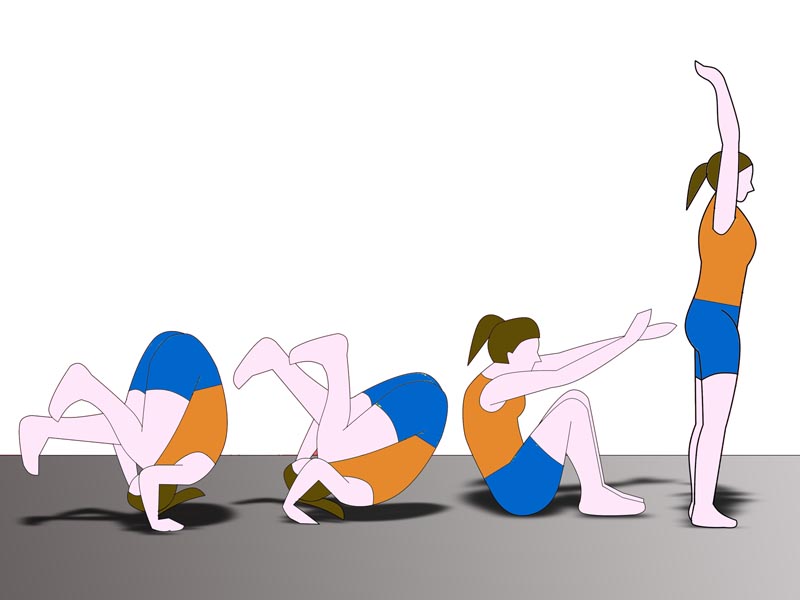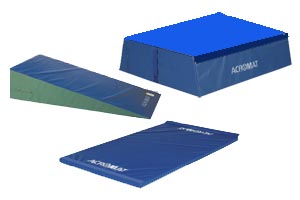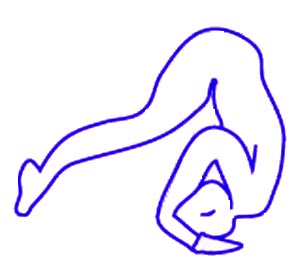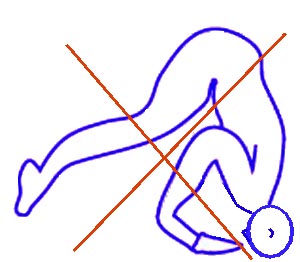Teaching Forward Rolls (a.k.a. Somersault)

Technically a 'sault' is a skill that is performed in the air. A Forward Roll is performed on the ground, so in this article I am calling this skill a 'Forward Roll', not a 'Somersault'.
This is arguably one of the most enjoyable movements that children do. My 2 y.o. son loves doing forward rolls. However, children today typically don't tend to experiment as much with different movement patterns like we did when we were growing up.
The trick with forward rolls is to start children doing them early - the earlier the better. If a child hasn't had any experience rotating around their transverse axis, then the first few times can be quiet scary. The start of the roll feels like you are falling over. The longer you leave it, the harder it is to teach. It's much easier to help a small 5 y.o. do their first forward roll, than it is to help a large 12 y.o! Forward rolls should be introduced in the first year of school, or earlier.
I've taught about 80,000 of these in many schools over the last 12 years, this is what I've found works best. Your experiences may differ.
NOTE:- This is about teaching beginner forward rolls, not technically accurate forward rolls for gymnastics competitions. Technique for a perfect competition forward roll is beyond the scope of this article.
Equipment Needed

The only equipment you really need to teach a forward roll is a soft surface. Forward rolls can be taught on soft grass, sand, practically anything with a bit of give in it. However, a scatter mat, a 30cm high soft box, and a 30cm high wedge are really useful.
A wedge is helpful as the slope assists the children to rotate, and gives them additional speed to help them stand up; however the angle also increases the falling sensation, so it can increase the fear factor for first timers.
I prefer to use a soft 30cm high box. The flat surface will not make the child feel like they are falling, and the end of the box normally matches where their knees finish, thus also helping them to stand up.
Safety (the most common error!)
A forward roll starts by tucking your head in and falling on your shoulders, or the back of your neck. The top of your head never touches the ground. As I say to the kids - "Don't squash your brains!".


Lets do it...
"Stand on the shape with your feet in the corners" - Legs are straddled to make a "star" shape. This lowers your center of mass and makes it both easier to put your hands on the ground, and reduces the height that you will fall from. Less height = less fear. I have also seen this taught by starting in a tucked position, then extending the legs and tucking in the head, however for a beginner this is harder as there is more to think about, and beginners frequently knee themselves in the head trying to do it this way. Starting with your legs apart is easier and safer.
"Put your hands on the ground in between your feet" - The closer your hands are to your feet the easier it is to fall over onto your back. If your hands are too far away then you will need to jump to do it. Jumping = More force, which means more pain if you do it wrong. Children that are scared won't want to put their hands between their feet as the falling sensation gets greater, but they need to do it if they don't want to hurt themselves!
"Tuck your head in and look through your legs behind you" - Place a target on the wall, or put something behind them that they have to spot before they roll over. "Tuck your head in so you can see the roof" also works.
"Keep your head tucked in and fall over" - The wedge or box if you are using it will assist them to roll up onto their feet.

